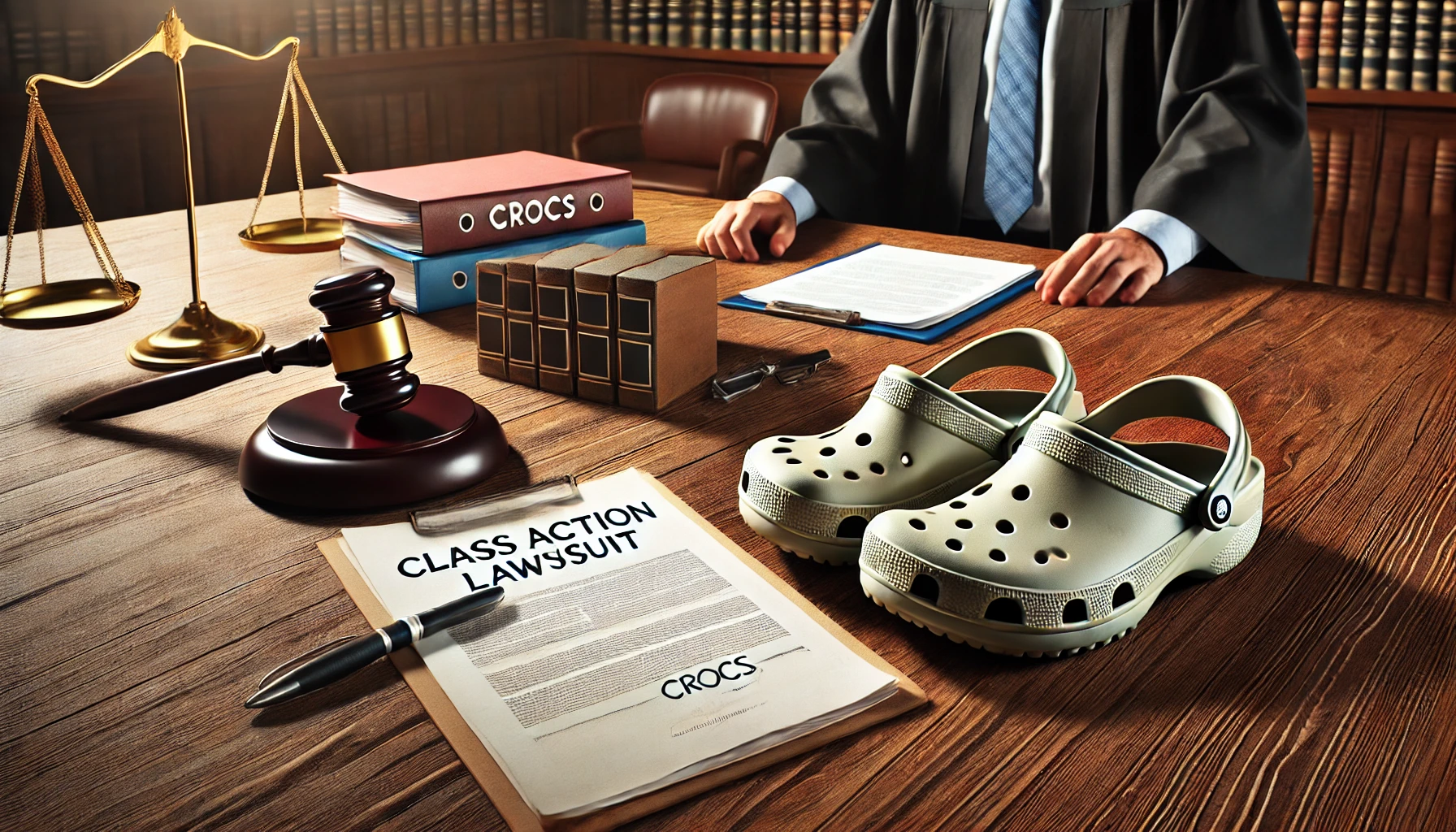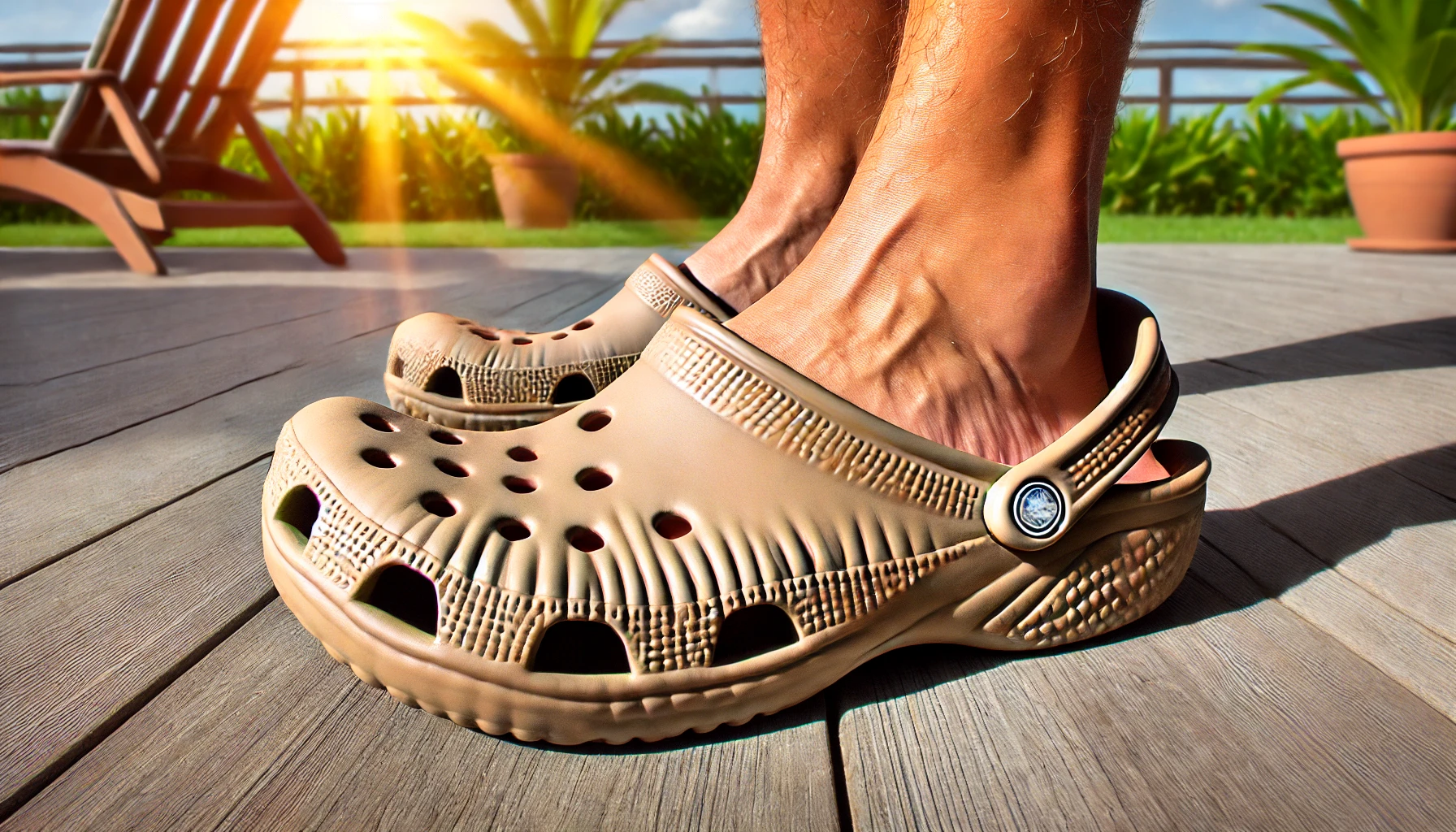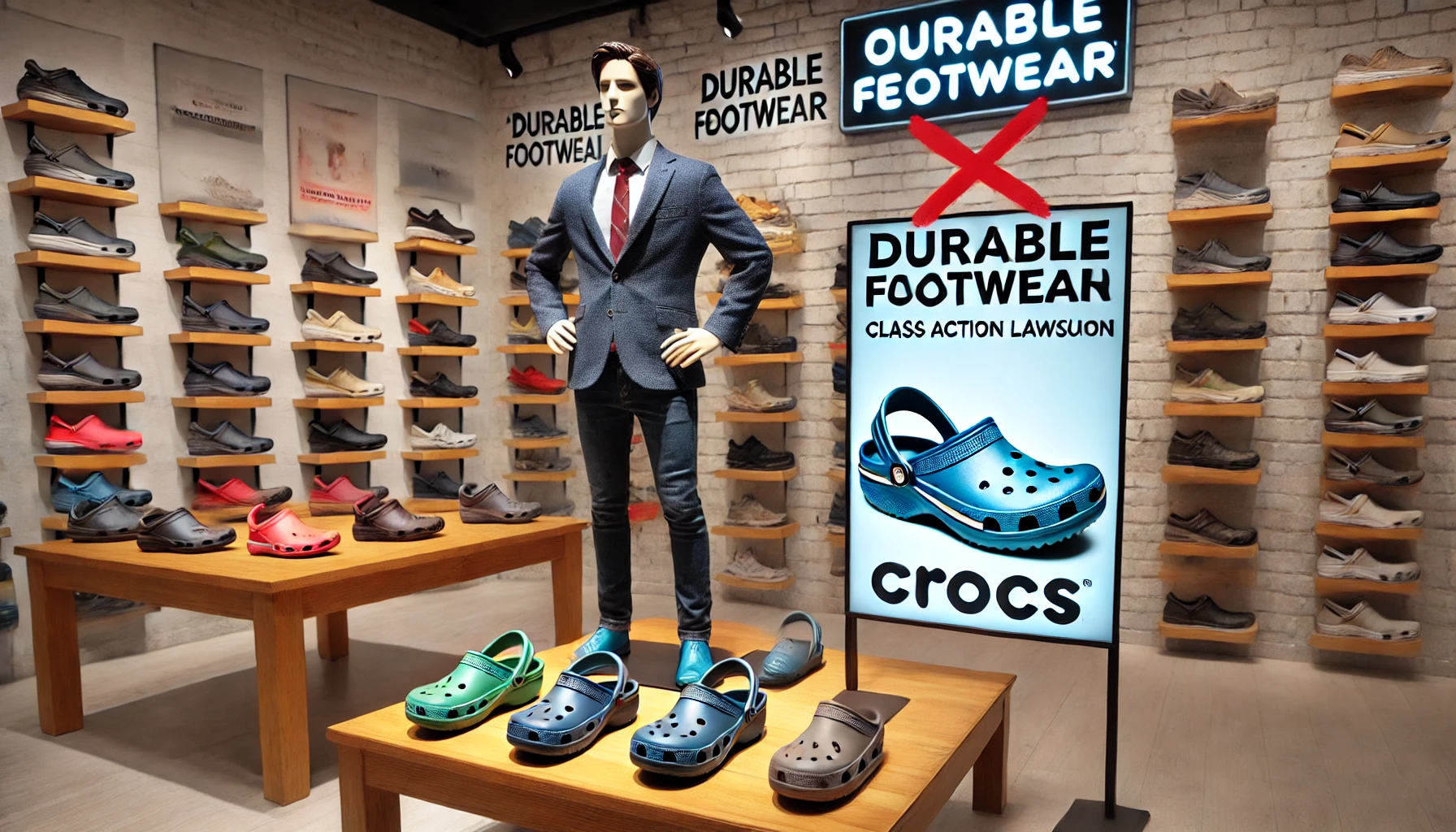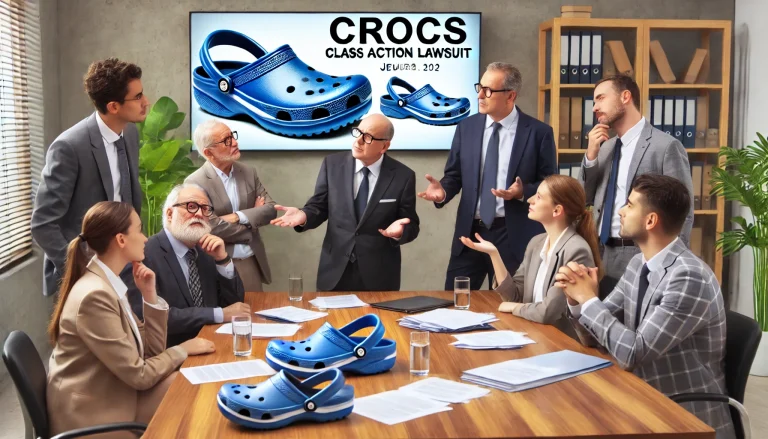Crocs is a popular brand known for its unique, comfortable, and colorful footwear. Over the years, Crocs has been widely embraced for its versatility, being used for casual wear, outdoor activities, and even water sports. The shoes are made from Croslite, a proprietary material designed for comfort and durability. Despite its popularity, Crocs is now facing a Crocs Class Action Lawsuit regarding a significant problem that many customers have encountered: shrinking footwear.
This lawsuit has grabbed attention because it challenges both the product quality and the company’s marketing practices. Consumers who purchased Crocs with the expectation that they were buying durable shoes have found their footwear shrinking after exposure to heat, sunlight, or water. This issue has led to frustrations, and the class action aims to address these concerns by seeking legal action against Crocs for misrepresentation and other claims. In this article, we will take a closer look at the key details of this lawsuit, how it impacts consumers, and what it means for Crocs moving forward.
The Basis of the Lawsuit
At the heart of the lawsuit is a significant complaint: Crocs shoes are allegedly shrinking when exposed to heat, sunlight, or water. For many customers, this means that the shoes lose their original fit, becoming uncomfortable or even unwearable. This issue has led to a sense of betrayal among those who trusted Crocs for its advertised durability, especially in outdoor or water-based settings.
The plaintiffs argue that Crocs marketed their shoes as suitable for various activities, including outdoor adventures and water sports, without disclosing the risk of shrinkage under certain conditions. They contend that the company misrepresented the product’s true performance and failed to issue proper warnings. The legal basis for the lawsuit includes allegations of false advertising, breach of warranty, and consumer protection violations.
Crocs Class Action Lawsuit: What You Need to Know
The Crocs class action lawsuit has gained attention due to allegations that the popular footwear shrinks when exposed to heat, sunlight, or water. Many consumers trusted Crocs for their durability and suitability for outdoor and water activities, but they claim the shoes didn’t live up to these expectations. Customers who experienced shrinking shoes argue that Crocs failed to warn them about these issues, leading to frustration and financial loss.
The lawsuit, filed in California, accuses Crocs of false advertising and breach of warranty. It alleges that the company marketed its shoes as durable and versatile without disclosing their susceptibility to shrinkage under certain conditions. This has sparked widespread concern among customers who feel misled by the brand’s promises.
If successful, the lawsuit could result in compensation for affected consumers, including refunds or replacements. It may also push Crocs to change its marketing practices and include clear warnings about product limitations. For customers experiencing similar issues, the lawsuit highlights the importance of standing up for consumer rights and holding companies accountable for their claims.
Timeline of Events
The issues with shrinking Crocs shoes started to surface as customers shared their experiences online and with customer service. These reports began to gain traction as more and more people encountered the same problem: shoes that shrank after being exposed to sunlight, heat, or water. This sparked a public outcry, with many feeling that Crocs had failed to live up to its promises of durability and suitability for outdoor use.
In late 2022, the class action lawsuit was officially filed in California, targeting Crocs for the issues with their shoes. The plaintiffs are not only seeking financial compensation for their losses but also demanding that Crocs be held accountable for its advertising and product claims. They argue that the shoes were sold with misleading marketing materials that failed to address the risk of shrinkage.
As of April 2024, a federal judge ruled against Crocs’ motion to dismiss the case, allowing the lawsuit to proceed. This decision marked an important moment in the case, as it meant that the plaintiffs’ claims would continue to be reviewed in court. The lawsuit is currently in the discovery phase, where both parties are gathering evidence to support their positions.
Key Parties Involved
The lawsuit involves two main parties:
Plaintiffs
A group of consumers who purchased Crocs footwear in California after November 22, 2018, and experienced the shrinking issue. These individuals argue that they were misled by the product’s advertising and are seeking compensation for the defective products they purchased.
Defendants
Crocs, Inc. The company is defending itself by arguing that the issue of shrinkage may be due to misuse by customers. Crocs has suggested that the shoes were not intended for exposure to excessive heat or water, and that proper usage instructions were provided. However, the plaintiffs argue that these warnings were insufficient and not adequately communicated.
Evidence and Allegations
The plaintiffs are building their case with a range of evidence that highlights the issues consumers have experienced with their Crocs shoes:
- Customer Testimonies: Many customers have provided personal accounts of their shoes shrinking after being exposed to sunlight, heat, or water. Some customers found that their Crocs became too tight, uncomfortable, or completely unusable. These testimonies help establish a pattern of similar experiences among different individuals.
- Marketing vs. Product Reality: Crocs advertised its footwear as durable and appropriate for outdoor and water activities, which is a key part of its appeal. The plaintiffs argue that the company misrepresented the shoes’ true performance by not warning customers about the risk of shrinkage. If the shoes were truly intended for such activities, the plaintiffs believe they should have been more resilient under heat or water exposure.
Legal Implications for Crocs
If the plaintiffs are successful in this class action lawsuit, Crocs could face several legal consequences:
- Financial Compensation: Consumers who have experienced issues with shrinking Crocs shoes may be entitled to compensation. This could include refunds, replacements, or other forms of financial reimbursement for those who bought defective products.
- Changes to Marketing Practices: Crocs may be required to revise its marketing materials to include clear warnings about the potential for shrinkage when the shoes are exposed to certain conditions. This could involve adding specific product disclaimers about the limitations of the footwear in extreme temperatures or water-based environments.
Beyond financial compensation, the lawsuit could have a broader impact on Crocs’ reputation. If the case garners significant attention, the brand may be forced to address the trust issues that have arisen from the allegations.
Consumer Awareness
For consumers who have experienced problems with their Crocs shoes, this lawsuit could provide an opportunity to seek compensation. Here’s what affected customers should know:
- Eligibility: If you purchased Crocs shoes in California after November 22, 2018, and experienced shrinking issues, you may be eligible to join the class action lawsuit. It’s important to check the legal eligibility requirements and ensure that you have proof of purchase and evidence of the defect.
- Documentation: If you have encountered this problem, it’s crucial to retain any relevant evidence, such as receipts, photos of the damaged shoes, or correspondence with customer service. This documentation could be useful if you wish to join the class action and seek compensation.
- Stay Informed: As the lawsuit progresses, keep up to date with any developments, such as settlement offers or the progress of the case in court. This will help you stay informed about your rights and options.
Broader Industry Context
The Crocs class action lawsuit could have implications beyond the company itself. It highlights the growing demand for transparency and accountability in the consumer goods industry. More consumers are beginning to hold companies accountable for the quality and performance of their products. This case also reflects a broader trend of increased scrutiny of marketing practices in the footwear and apparel industries.
This lawsuit may encourage other companies to be more cautious about the claims they make in their advertisements, especially when it comes to product durability. The outcome of this case could set a precedent for how businesses in the footwear industry, and beyond, handle issues of product defects and misleading advertising.
Conclusion
The Crocs class action lawsuit is a significant legal case that addresses concerns about the durability and performance of the brand’s footwear. The allegations of shrinking shoes are central to the lawsuit, with plaintiffs claiming that Crocs misrepresented the quality and durability of its products. If the plaintiffs win, Crocs may be required to compensate affected customers and change its marketing practices.
For consumers who have experienced similar issues, this lawsuit provides an opportunity to seek compensation. It also serves as a reminder to be vigilant about product claims and to hold companies accountable when they do not deliver on their promises.
FAQs
Why are Crocs being sued?
Crocs is facing a lawsuit for allegedly shrinking when exposed to heat, sunlight, or water, despite being marketed as durable for outdoor use.
Who can join the class action lawsuit?
California residents who purchased Crocs after November 22, 2018, and experienced shrinking issues may be eligible to join.
What compensation might consumers receive?
Consumers could receive refunds, replacements, or financial compensation if the plaintiffs succeed in the lawsuit.
What is Crocs’ defense in this lawsuit?
Crocs claims the shoes performed as intended and that misuse or lack of proper care may have caused shrinkage.
How can I stay updated on the lawsuit?
Monitor official legal updates or websites dedicated to the lawsuit for news on eligibility, settlements, and case progress.
Article Recommendations
Smoothstack Lawsuit: Examining the Allegations and Their Impact on Tech Employment Practices
Sparta Mesothelioma Legal Question: A Victim’s Guide to Asbestos Lawsuits and Support in Tennessee





